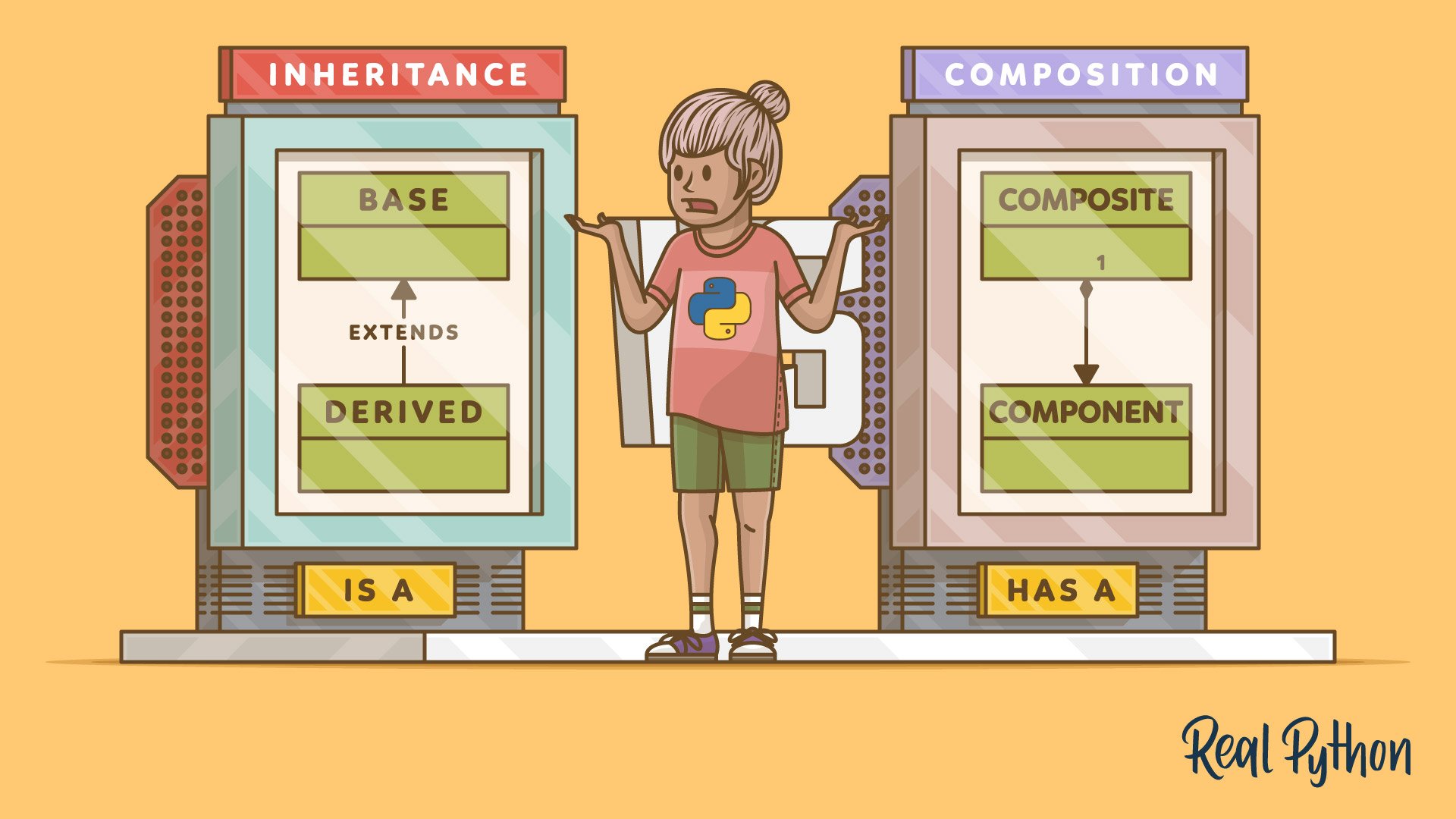composition
In object-oriented programming (OOP), composition is a fundamental concept that allows you to build composite objects by combining simpler ones.
Rather than using inheritance to create a new class, you can use composition to include objects of other classes as attributes. This approach provides more flexibility and modularity because it allows you to change the behavior of a class by replacing one of its components.
You should favor composition over inheritance when you want to use functionality from multiple classes without creating a rigid class hierarchy. It promotes code reuse and leads to more maintainable and adaptable codebases.
Example
Here’s a quick example of composition in Python:
vehicles.py
class Engine:
def start(self):
print("Engine started!")
class Car:
def __init__(self):
self.engine = Engine()
def start(self):
self.engine.start()
# Usage
car = Car()
print(car.start()) # Usage: Engine started!
In this example, the Car class has Engine as a component. Instead of inheriting from Engine, Car uses an instance of Engine to perform actions, demonstrating composition.
Related Resources
Tutorial
Inheritance and Composition: A Python OOP Guide
In this step-by-step tutorial, you'll learn about inheritance and composition in Python. You'll improve your object-oriented programming (OOP) skills by understanding how to use inheritance and composition and how to leverage them in their design.
For additional information on related topics, take a look at the following resources:
- Python Classes: The Power of Object-Oriented Programming (Tutorial)
- Object-Oriented Programming (OOP) in Python (Tutorial)
- Inheritance and Composition: A Python OOP Guide (Course)
- Inheritance and Composition: A Python OOP Guide (Quiz)
- Inheritance and Internals: Object-Oriented Programming in Python (Course)
- Class Concepts: Object-Oriented Programming in Python (Course)
- Python Classes - The Power of Object-Oriented Programming (Quiz)
- Intro to Object-Oriented Programming (OOP) in Python (Course)
- Object-Oriented Programming (OOP) in Python (Quiz)
By Leodanis Pozo Ramos • Updated April 10, 2025

